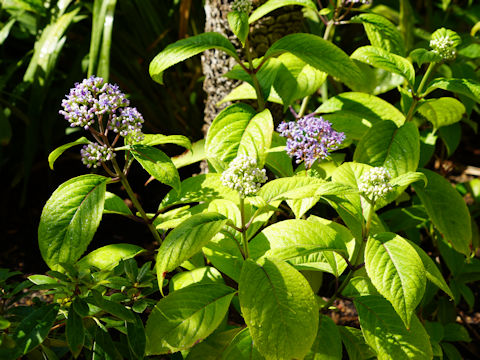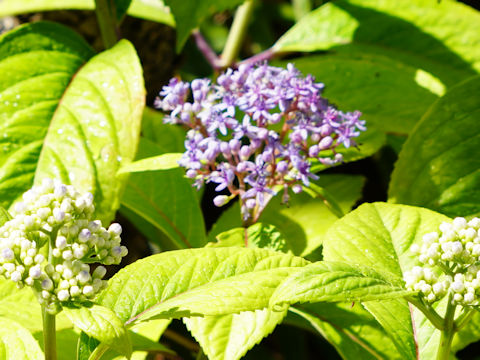
|
The Chinese quinine (Dichroa febrifuga) belongs to Hydrangeaceae (the Hydrangea family). It is a deciduous shrub that is distributed in China, the Hymalayas, south-eastern Asia, Sumatra, Borneo and Java. This shrub grows in forests and along streams, and up to a height of 0.4-2 m. The stems are round and erect. The leaves are oblong to broad-lanceolate, dark green and serrated. The flowers are bisexual, blue or blue-purple, and bloom in a corymb from June to July. The fruit is berry, ovate, dark blue at maturity. The whole plant is toxic. It is an important herb in traditional Chinese medicine. The alkaloids febrifugine and isofebrifugine are believed to be responsible for its antimalarial effects. In Chinese, it is called "常山" (chang shan).
|

